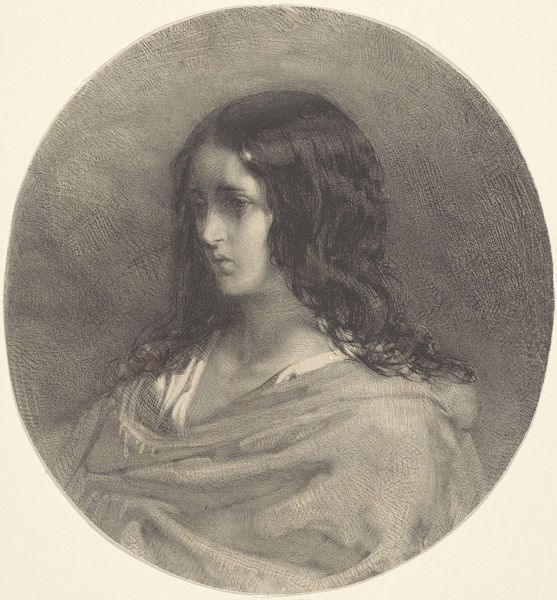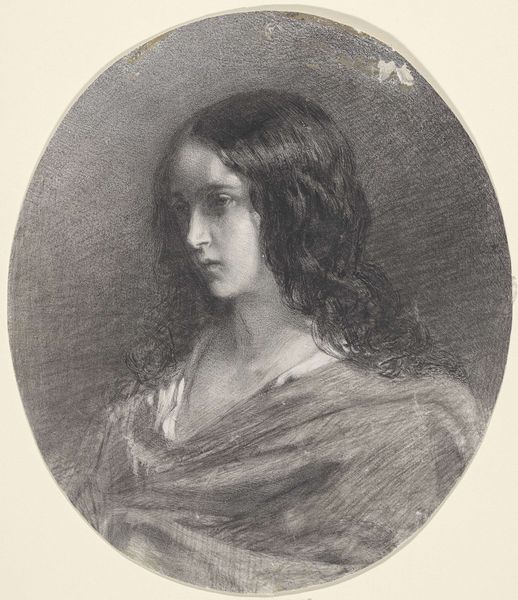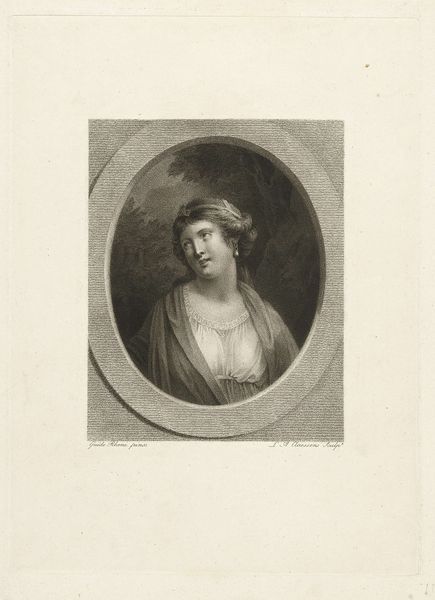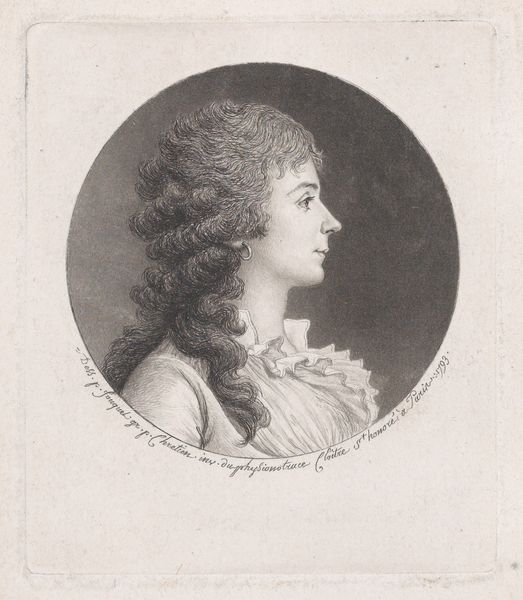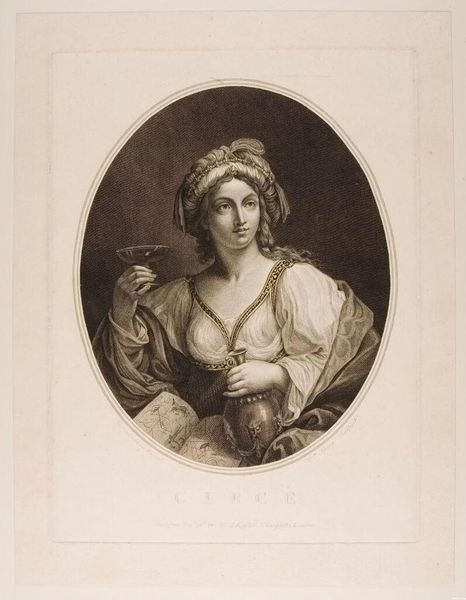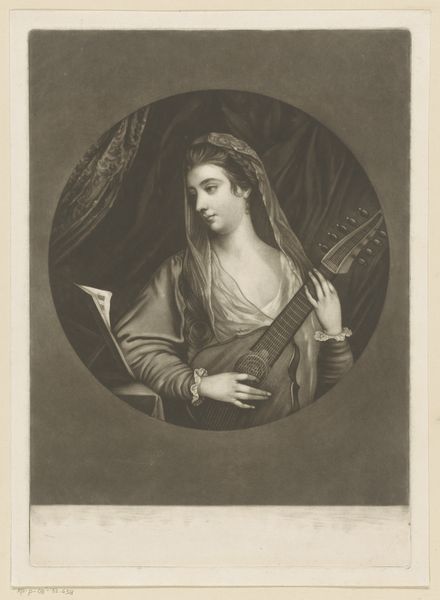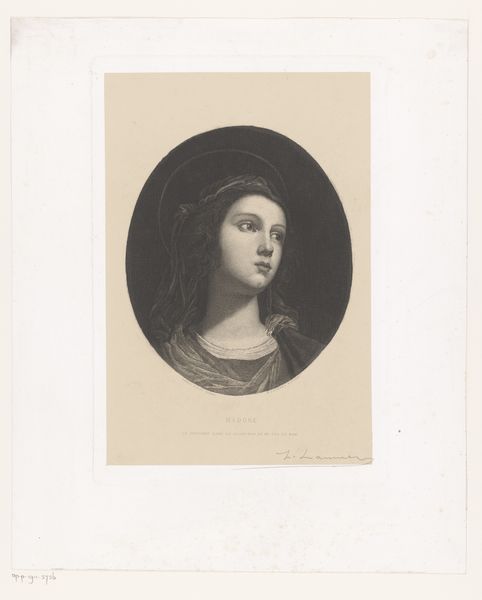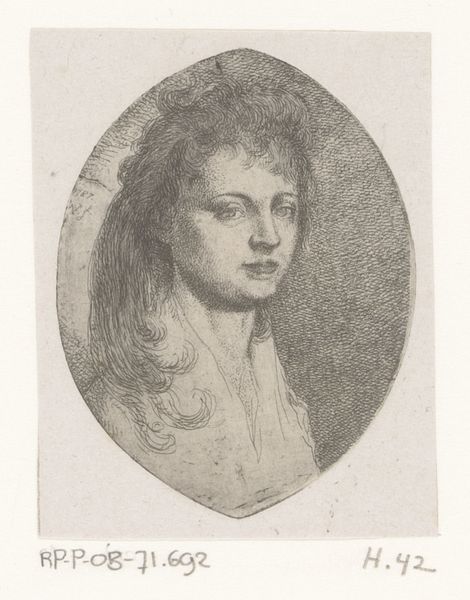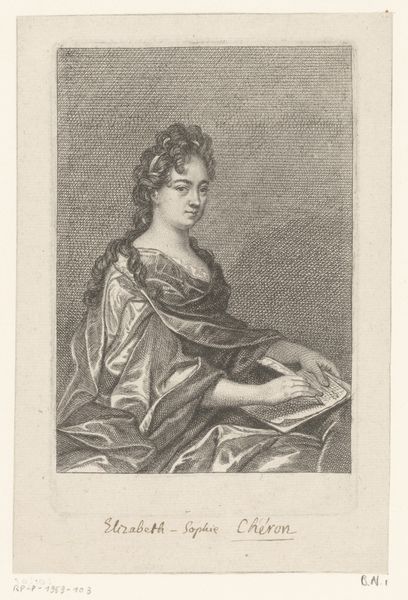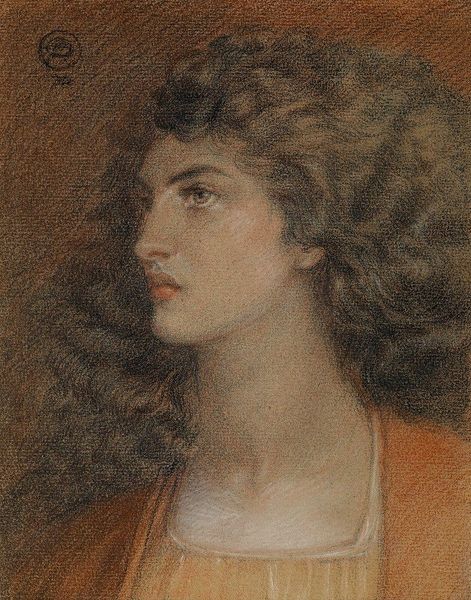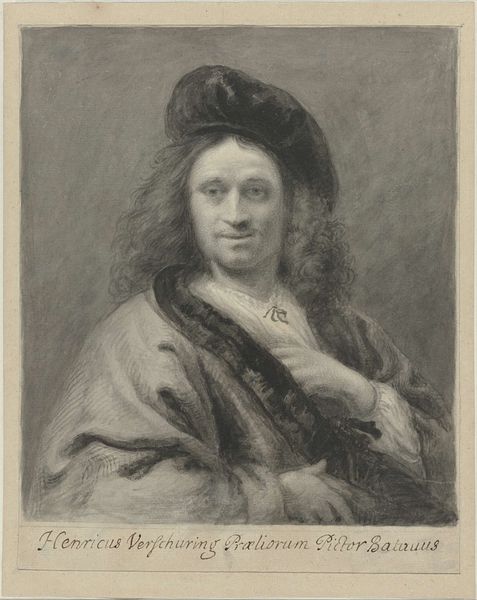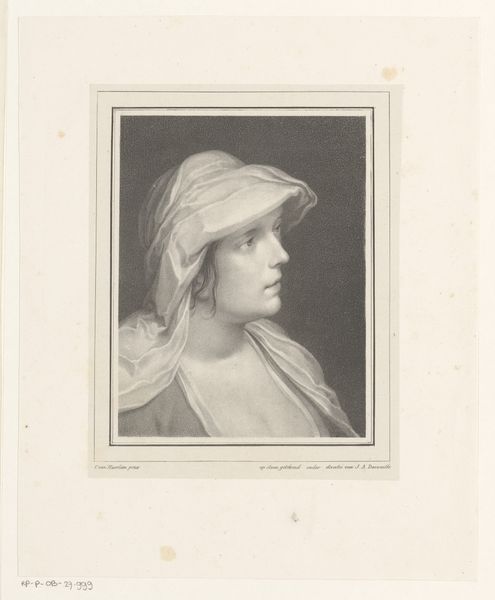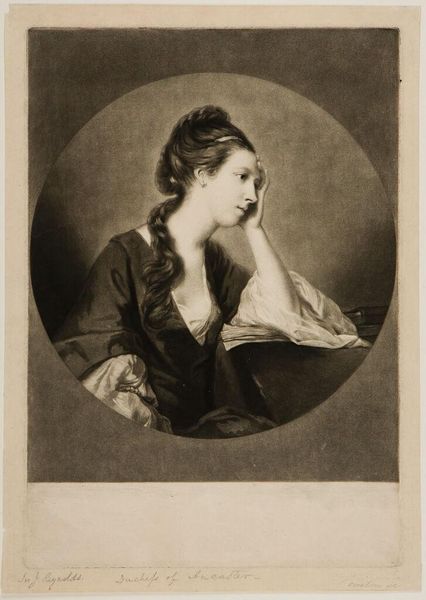
drawing, pencil
#
portrait
#
pencil drawn
#
drawing
#
charcoal drawing
#
pencil drawing
#
pencil
#
portrait drawing
#
academic-art
#
realism
Dimensions: height 305 mm, width 243 mm
Copyright: Rijks Museum: Open Domain
Curator: Looking at this work, "Lutetia" by August Allebé, completed sometime between 1848 and 1891 and currently held in the Rijksmuseum, I immediately notice its ties to academic art traditions, evident in its refined pencil work and focus on portraiture. Editor: The first thing that strikes me is how ethereal the drawing is. There's almost a Pre-Raphaelite softness to the depiction of the woman’s face and hair. The shading gives her a wistful, dreamlike quality. Curator: Absolutely. The medium and the style are very typical of the era. Consider the public exhibitions and Salon culture which promoted idealized beauty; it's easy to contextualize how Allebé strategically utilized portraiture. I think, we can ask how this work participated in shaping the public’s understanding of beauty and representation at the time. Editor: Well, let's explore the title: "Lutetia" refers to the ancient Roman name for Paris. The woman, then, can be interpreted as a personification of the city. We often see feminine figures representing nations and ideas. Could this be Allebé's attempt to embody the spirit of Paris itself? Her downward glance, though, hints at something deeper, maybe a pensive reflection on the city’s past, or a commentary on her role? Curator: An interesting take! The symbolic connection with Paris is key and certainly informs our interpretation. It's probable, though, that Allebé may have considered social shifts impacting Parisians rather than constructing an unambiguous endorsement of French nationalism. After all, realism also underscores many aspects of the work. The artist also painted several genre paintings; the "Lutetia" feels akin to studies he completed elsewhere, if, of course, bearing slightly more allegorical weight than, say, a milkmaid portrait. Editor: I see your point about the influence of realism and genre studies in the piece. Still, there is that allegorical presence we should not fully dismiss. In her features I glimpse at Roman bust depictions—not copies but subtle and indirect associations. It adds a layer of temporal depth: Paris superimposed on Roman heritage and projected back into Parisian society of the 1800s. The past as part of modern consciousness... Curator: True, there is no way to simplify these works; it all reveals a rich cultural tapestry influencing not just artists such as Allebé, but also shaping artistic and aesthetic taste overall. Editor: Precisely! This artwork has indeed allowed us to glance across a layered portrait: historical, societal and psychological at once.
Comments
No comments
Be the first to comment and join the conversation on the ultimate creative platform.
